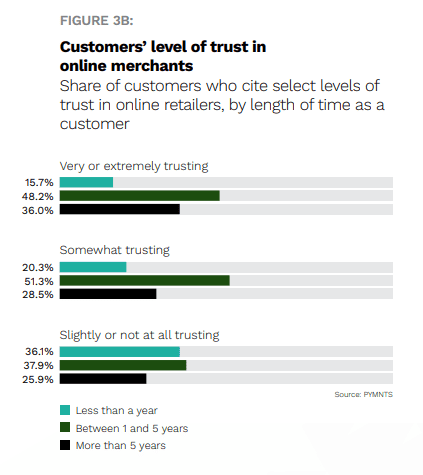Back to Basics: Retail’s Customer Service Improvement Mandate
Brands may be best suited to remember the golden rule as consumers vent their frustrations online.
As reported by The Wall Street Journal Tuesday (March 7), 74% of consumers have encountered an issue with a product or service over the past year. This is according to the Arizona State University conducted National Customer Rage Survey, representing the highest dissatisfaction rate since the survey began and an 8% rise since 2020. However, customers are no longer content with simply lodging complaints on a customer service line. The study also noted that consumers are taking their grievances “to the streets” and airing their issues on social media or other online platforms.
This rate of customer dissatisfaction has been brewing for some time, as evidenced in the May 2022 PYMNTS collaboration with Riskified, “Satisfaction In The Age Of eCommerce: How Trust Helps Online Merchants Build Customer Loyalty.” Trust, for the purpose of this survey, refers to the level of faith a surveyed consumer has in a given online retailer’s ability to deliver the expected customer experience.

Satisfaction rates increased the longer the customer has patronized a retailer. However, more than 1 in 4 consumers surveyed were still slightly or not at all trusting after more than five years. This is significant because as the report further states, 40% of customers are very or extremely likely to switch to a new merchant after they lose that trust.
This doesn’t bode well for retailers’ customer retention levels, which is especially important these days when every share of consumer spend counts. While artificial intelligence (AI)-powered ChatGPT has been making headlines for its innovation potentials, success as a customer service automation tool has received mixed reviews. PYMNTS research finds that digital and automated innovations do rank high when it comes to the eCommerce experience. Seventy-two percent of surveyed consumers used their preferred payment for their last online purchase and another 60% securely stored their data for the same.
However, some merchants and platforms have stepped up their customer service strategies to beat consumers’ overall trust levels in online retailers. GlassesUSA.com is one such example. In an interview with PYMNTS, Doron Pryluk, the company’s senior vice president of customer experience, describes what that ideal sector-specific experience might look like. Saying it can mean everything from better pricing on products of comparable quality to using data and technology in reshaping “the online retail experience and digitize the traditional store experience and take it into the digital realm … We’re trying to add a lot of customer-facing tech tools to really transform the process of buying glasses online. We have a prescription scanner app, for example. We have our virtual try-on and a lot more tools. One of the key things that we’re focusing on is simply providing exceptional customer care and handholding our customers every step of the way.”
In this ultra-competitive landscape for shares of consumer spend, it’s easy to lose sight of the importance of old-fashioned strategy of addressing customer needs. Retailers and merchants that forget these basic tenets risk both their public wrath and revenue loss.
